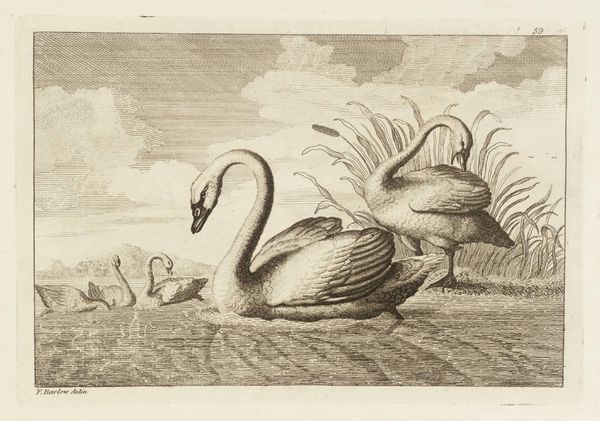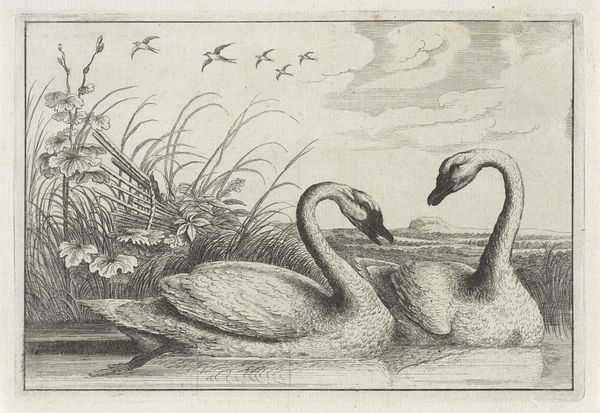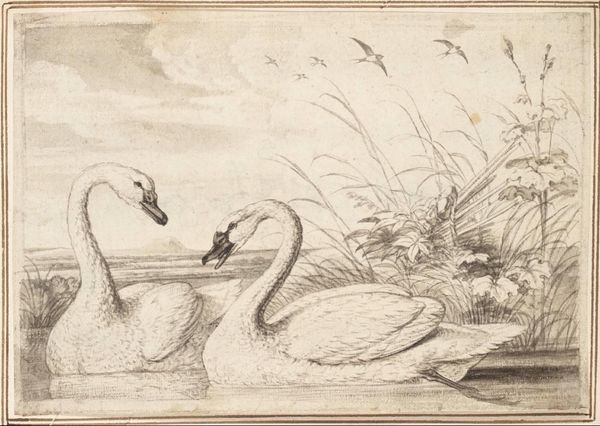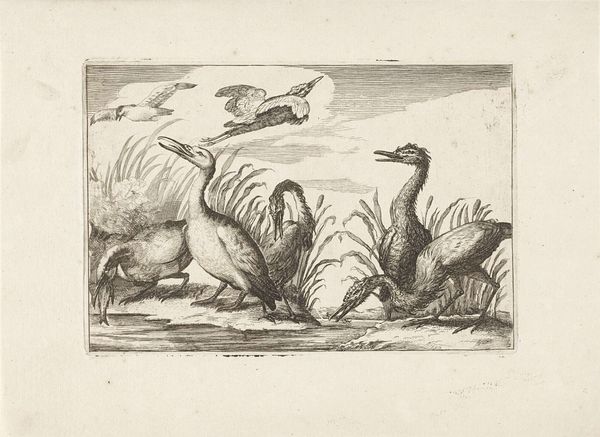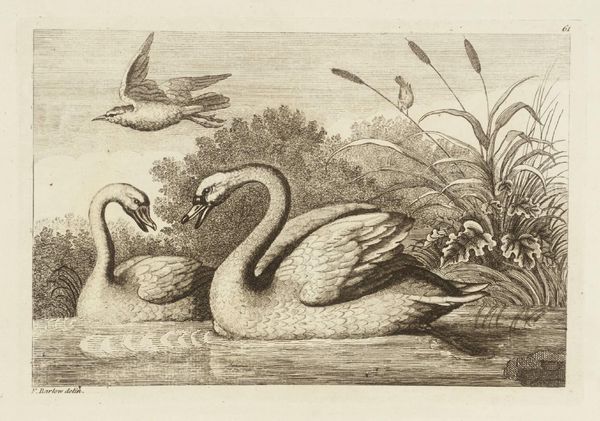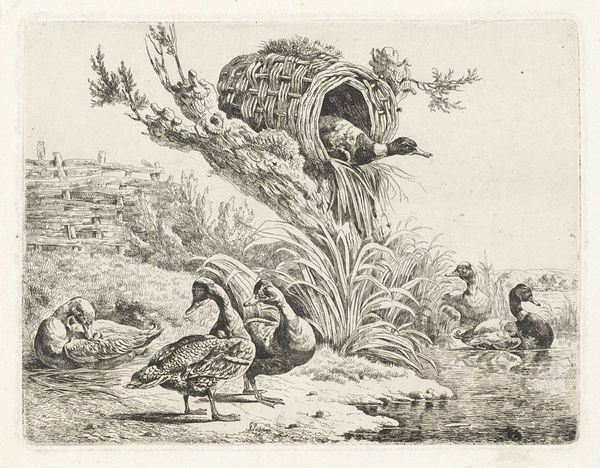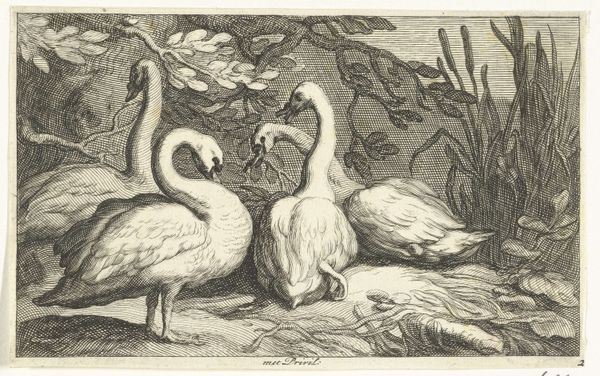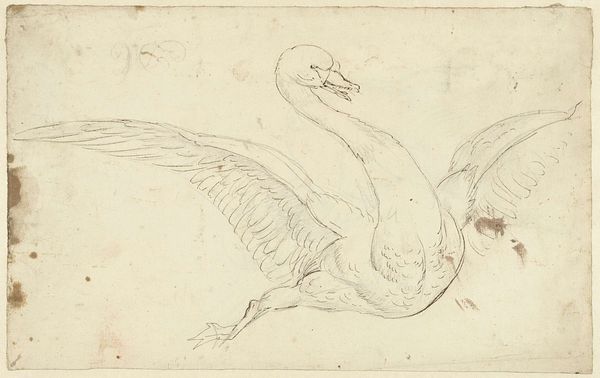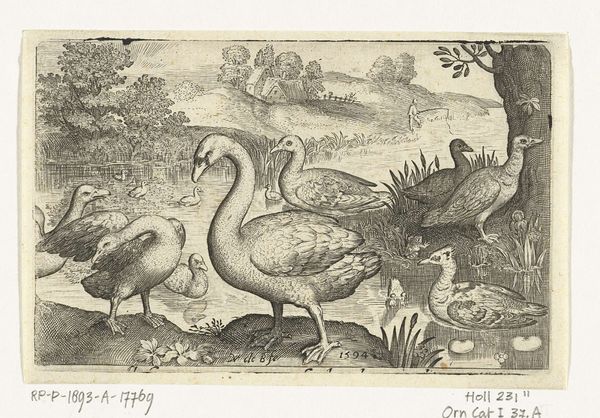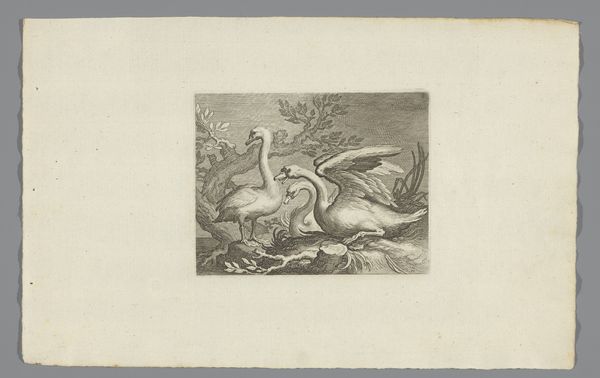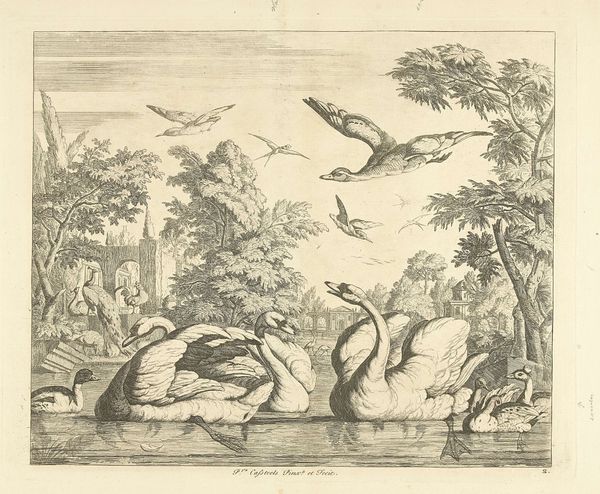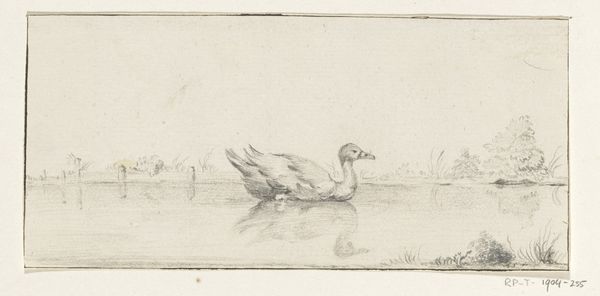
#
pencil drawn
#
light pencil work
#
pencil sketch
#
old engraving style
#
personal sketchbook
#
idea generation sketch
#
sketchwork
#
pen-ink sketch
#
sketchbook drawing
#
pencil work
Dimensions: height 135 mm, width 199 mm
Copyright: Rijks Museum: Open Domain
Editor: This is "Zwanen," or "Swans," by Pieter Schenk, made sometime between 1675 and 1711. It's currently held at the Rijksmuseum. The delicate lines and subtle shading give it a really serene quality, like a snapshot of peaceful domesticity. What do you see in this piece? Curator: I see more than just domesticity. While seemingly serene, representations of swans in the 17th and 18th centuries were often loaded with symbolism. Their whiteness could represent purity and grace, but also elitism and privilege, particularly in a Dutch Republic built on trade and nascent capitalism. Who got to experience this "peaceful domesticity" Schenk depicts? Editor: That's an interesting point. I hadn't considered the social implications of portraying such an idyllic scene. It makes you wonder about who this artwork was made for and the values it promoted. Curator: Exactly! The very act of depicting these swans, perhaps on the estate of a wealthy patron, could be seen as reinforcing a particular social order. Do you think Schenk was aware of these complexities? Was he complicit in upholding the status quo, or perhaps subtly critiquing it? The medium itself, engraving, made it accessible to wider audiences, sparking broader dialogues. Editor: It's tough to say. The light pencil work gives it an informal feel, almost like a quick study. Maybe he was simply capturing what he saw. Curator: Maybe. But even a "simple" observation is never truly neutral. We all carry our biases, our experiences, into what we see and create. Think about the symbolism of the swan, which long predates Schenk. Connecting it to gender, sexuality, and even revolution lets us reimagine this work! Editor: I guess I need to look beyond the surface and think about who benefits from this image. It gives me a lot to consider when looking at other art from this period too. Thanks! Curator: It is our job to do so, using Schenk's Zwanen to think about the gaze, social structures, and how "simple" art can have more profound meanings.
Comments
No comments
Be the first to comment and join the conversation on the ultimate creative platform.
